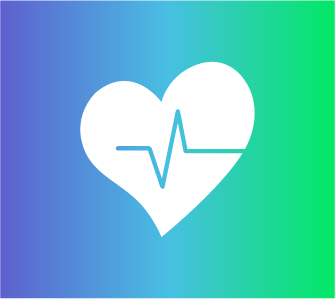Machine learning is an innovative technology that can streamline all sorts of processes. Artificial intelligence, or AI, is a type of machine learning that can help predict the actions of people and the most likely outcomes, which improves efficiency, reduces waste, and makes many jobs so much easier. We see it applied every day in business from warehouses and online ordering systems to food delivery services.

Applying machine learning and AI to the practice of medicine, while it might sound unconventional, is also proving to be hugely beneficial. Many of the tedious processes that doctors are used to doing everyday—things that fill up a huge portion of your work hours—could be handled by a machine. Additionally, AI applied to telemedicine can decrease patient wait time, assist in constructing a differential diagnosis, and potentially improve outcomes by getting the patient to the right doctor sooner.
Let’s look at some ways that machine learning can improve not only your burgeoning telemedicine business but also free up your most valuable, and rewarding, patient interaction time.
What Does Machine Learning Mean for Telemedicine
The idea of shifting part or all of the responsibility for medical record keeping to a machine might sound daunting or even a bit dangerous, but the reality is that AI has come very far in the last 10 years. A machine can go through years of patient data in minutes, helping you find seemingly unrelated problems that might point to a bigger causal agent. Additionally, AI can help by reading a virtual chat from a patient and directing them to the most appropriate care.
Essentially, machine learning offers faster access to a streamlined database of patient information, medical histories, and so forth. It can link up multiple sites in your practice, from hospitals to satellite clinics, and makes information sharing a breeze. Imagine needing a consult from a specialist and instead of waiting weeks, you’re able to chat remotely in a few hours.
Machine learning for telemedicine:
- Can direct your patients to appropriate levels of care, as well as appropriate specialties, all remotely
- Reduces patient wait time by doing triage digitally: “where does it hurt,” “what medicines are you on,” etc can all be answered before your patient sees a person, streamlining your direct interaction. This means more meaningful time for you to work with the patient, which is what you want to do in the first place.
- By reducing waste, both in time and logistics: the patient can expect to pay less and overhead is reduced. Machine learning can determine peak times and appropriate staffing based on historical trends that would take months or years to go through manually.
How Can We Apply Machine Learning to Telehealth Visits?
Imagine a patient logs onto your telehealth interface with a series of concerns. Their data might already exist online, but if not, the AI can gather it easily and pull it into the chat. The patient describes their symptoms, medicines they’re taking, maybe even what they’ve eaten recently. From there, the AI can help determine the most likely acute problems. The doctor can then listen to the patient and verify what the system has determined based on the data given.
This is an example of using complex algorithms to sort through information quickly and accurately. The machine compares all available data, past and present, to come up with the most likely diagnoses. This doesn’t replace a doctor, but it cuts the amount of time-clutter patients and doctors deal with.
Consider how much more smoothly your practice would run if you didn’t have clunky whiteboards or file folders to determine patient order and which physician was seeing them. If a person was logged onto your telehealth network, AI could direct them to any available physician, cutting their wait time dramatically and ensuring you get to see the most relevant and acute patients sooner. It’s better for you and them!
Second Opinion Consultations
When a patient receives a diagnosis that is new, difficult, or uncomfortable, they may desire a second opinion to confirm the diagnosis or offer alternative treatment plans. Typically the process of finding the right physician, reviewing the relevant information, and actually obtaining a second opinion can be daunting and take weeks or even months. Many patients simply don’t have the time or resources to go through this process and may move forward with diagnosis and treatment plans without ever obtaining additional information. Even as an intelligent and motivated physician myself, when I received the difficult and time-sensitive diagnosis of bilateral retinal detachments, I did not feel that I had the time or capability to request a second opinion. I moved forward with a single treatment plan and to this day as I deal with the complications of that treatment plan, I still wonder if I made the right choice.
All of this can change with machine learning and AI. Telehealth AI can find a remote physician capable of providing a second opinion in a matter of days, provide the specialist with a streamlined version of all relevant information and even schedule the appointment between the patient and the specialist. This alone could cut down critical lapses in treatment for life threatening conditions, not to mention the increase the psychological benefit of a patient accepting and moving forward with treatment on a major diagnosis more quickly and confidently.
Finding appropriate referrals is another use for this type of technology. In much the same way, effective treatment time is expanded when time wasted waiting is diminished.
ViTel Health Machine Learning can Optimize Physician Time
By reducing the amount of cumbersome intake activity, staffing logistics, and patient information exchange, you can spend more time doing what you went into medicine to do – helping patients. This could mean not only more billable hours and career satisfaction for you, but also better outcomes for your patients.
ViTel is streamlining our telehealth solutions with AI and machine learning expectations. When applied to your practice, the amount of wasted time will be greatly reduced, making everyone happier, healthier, and significantly less frustrated.







